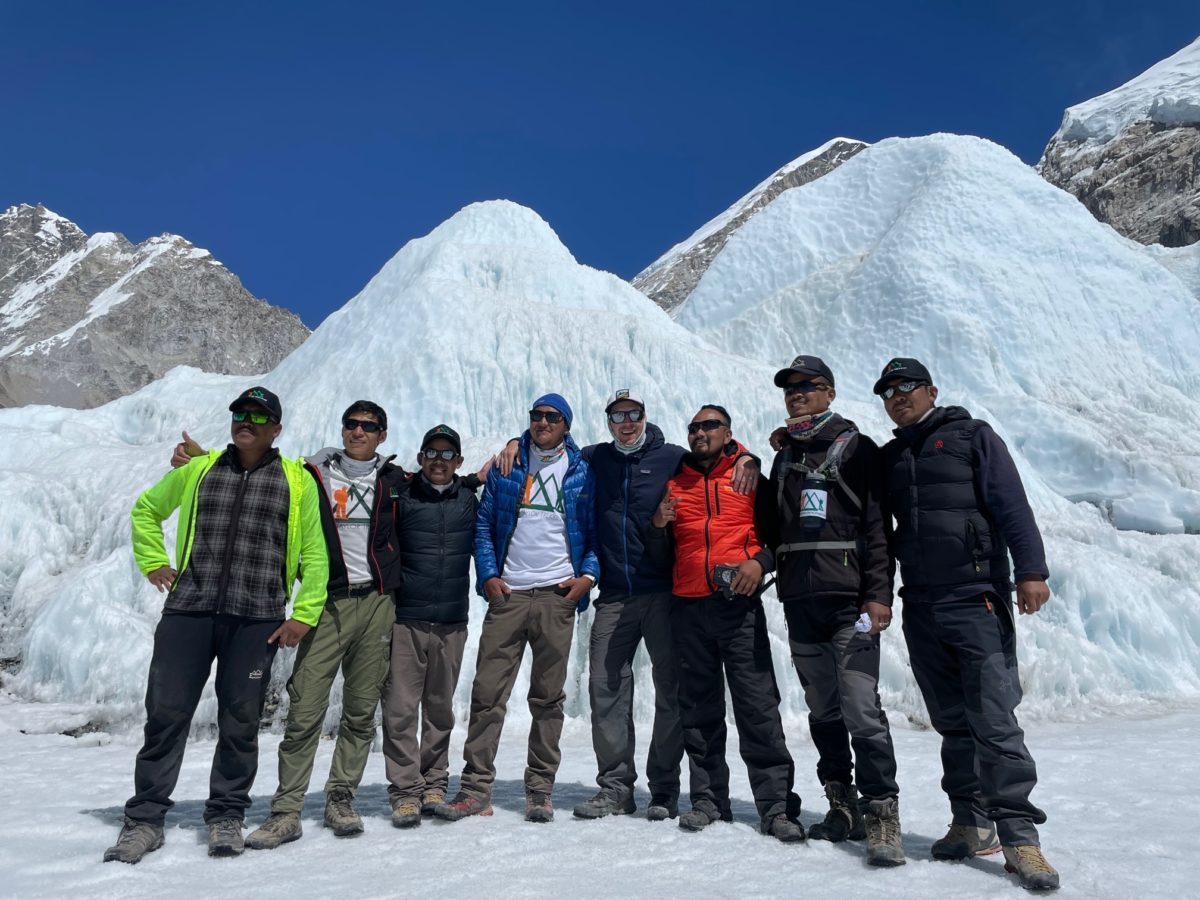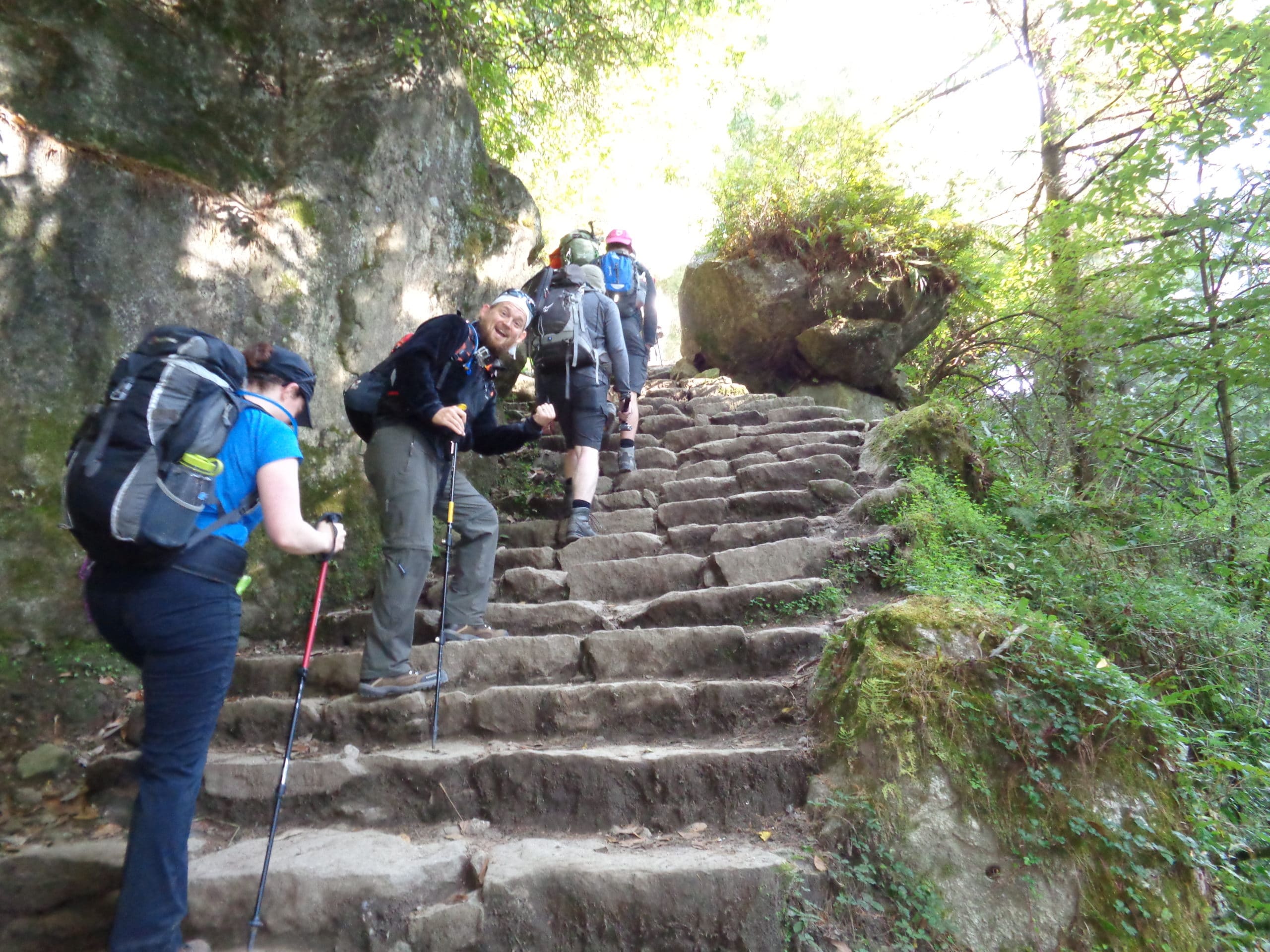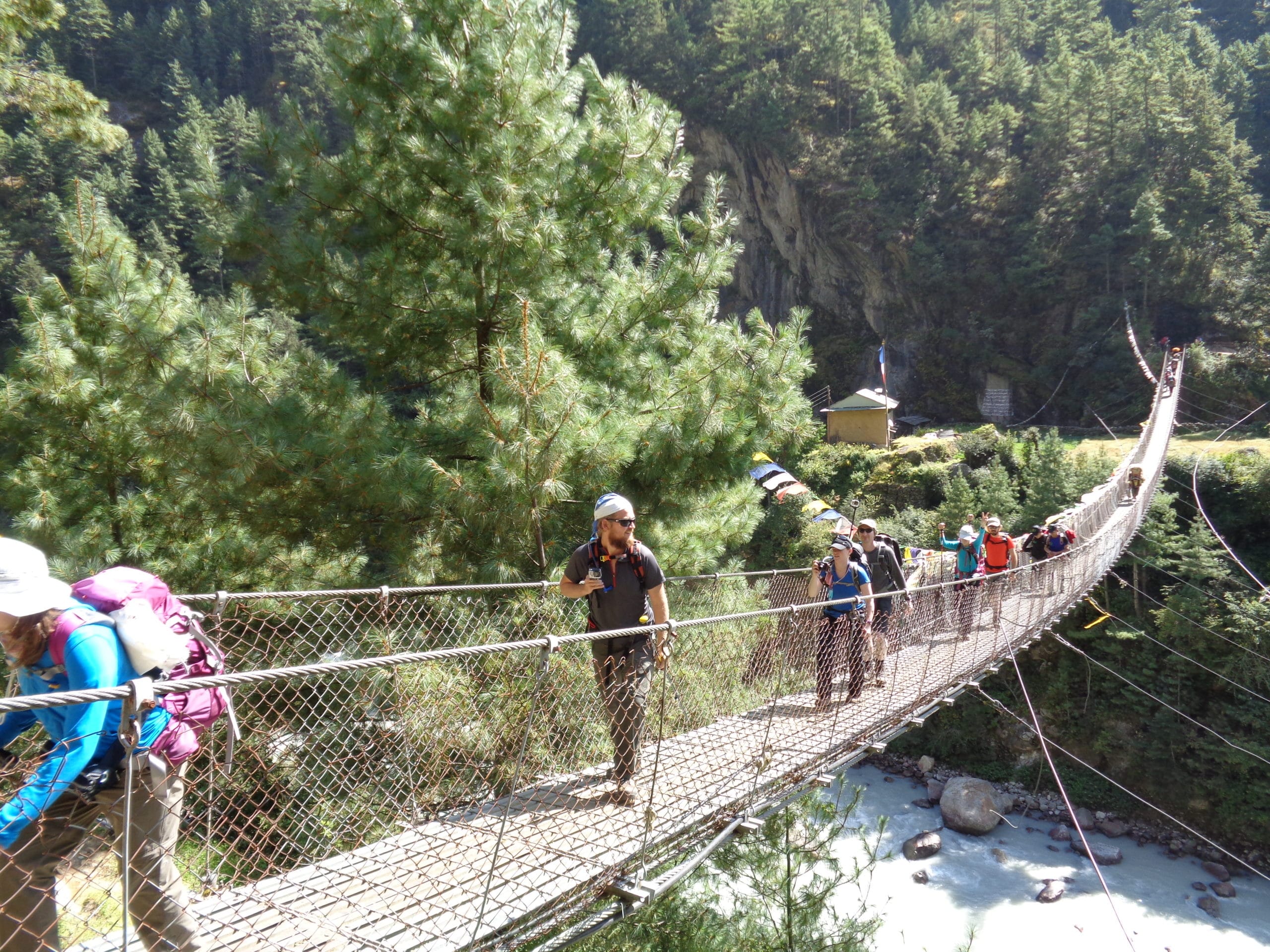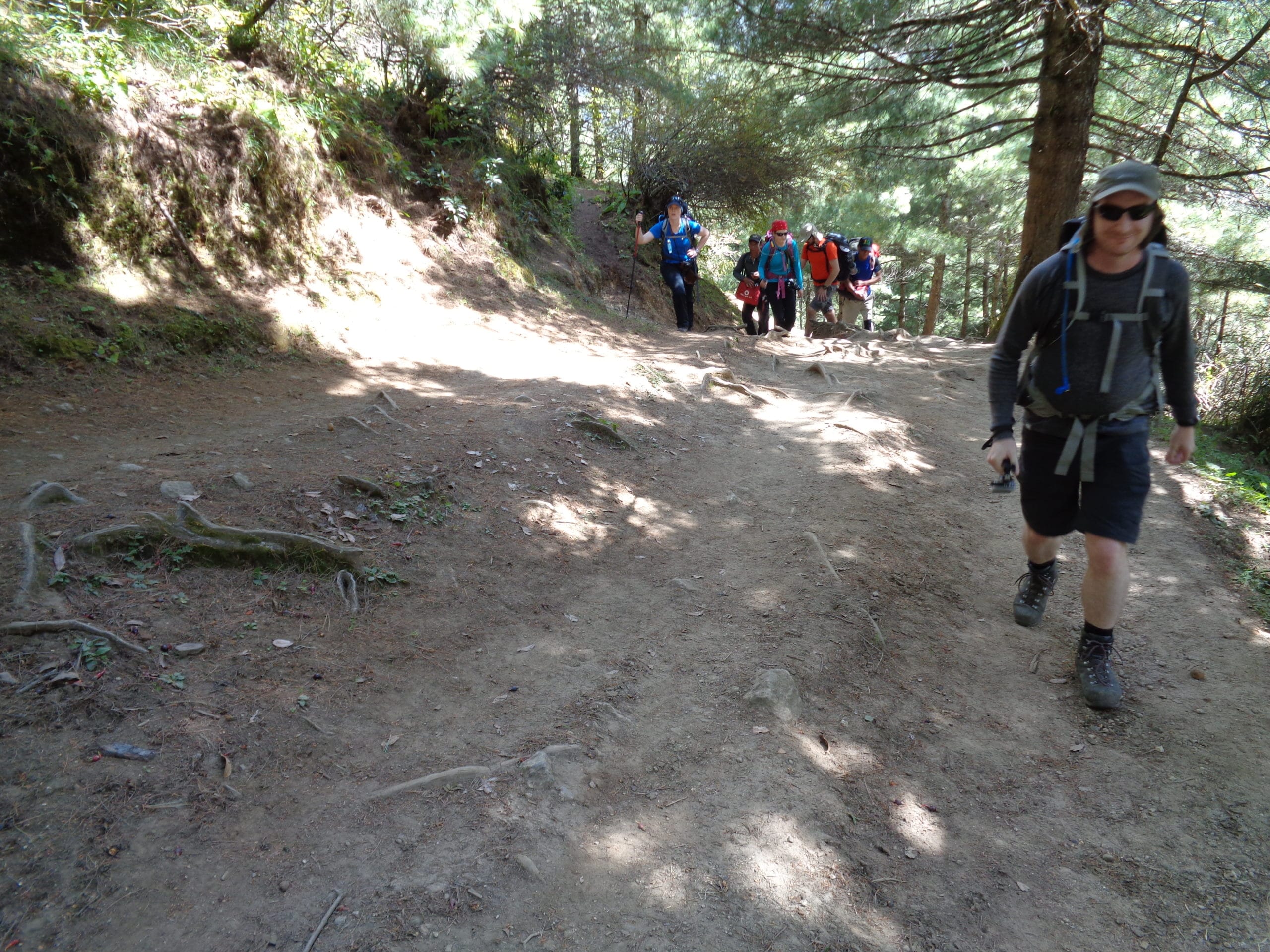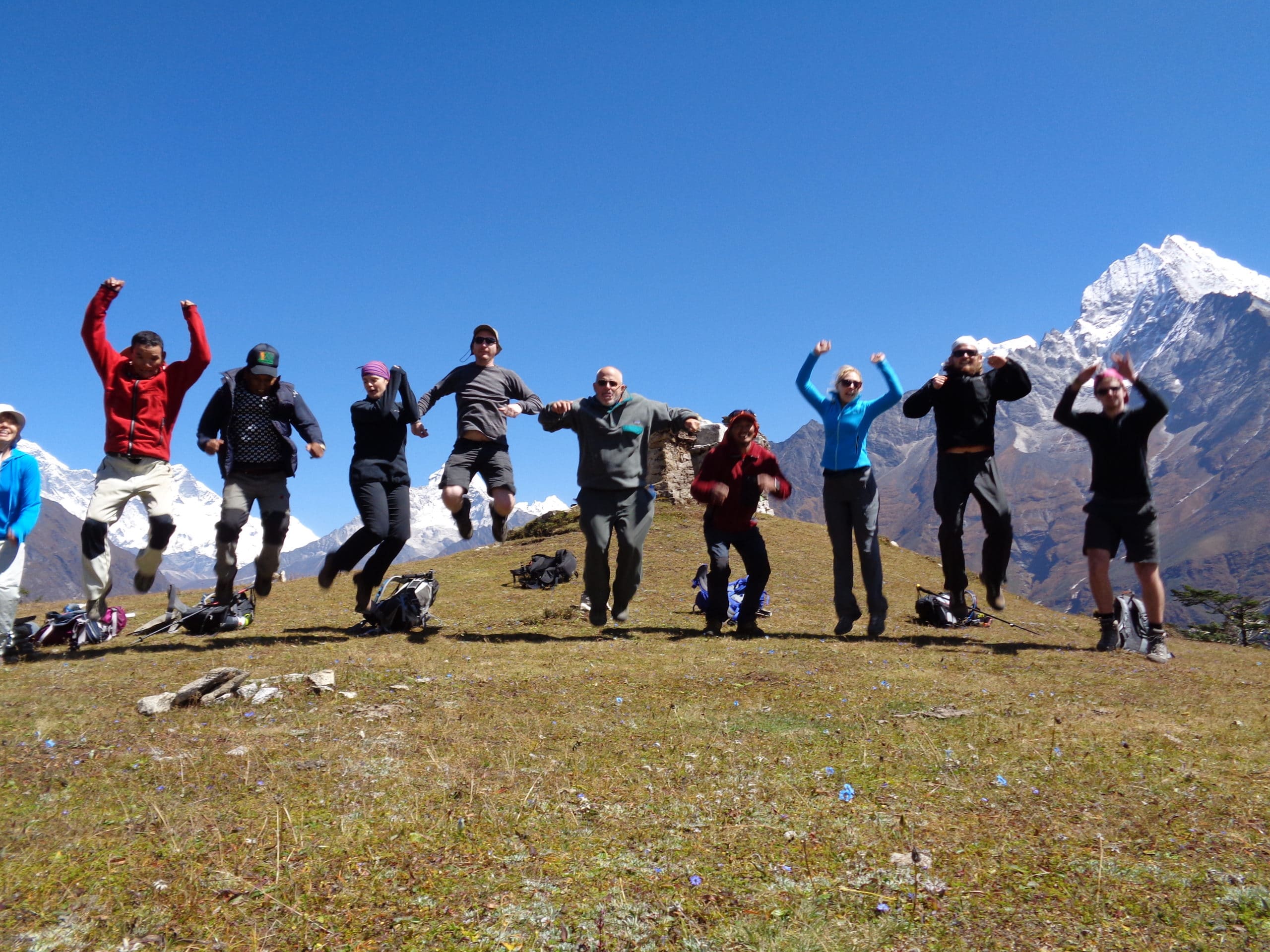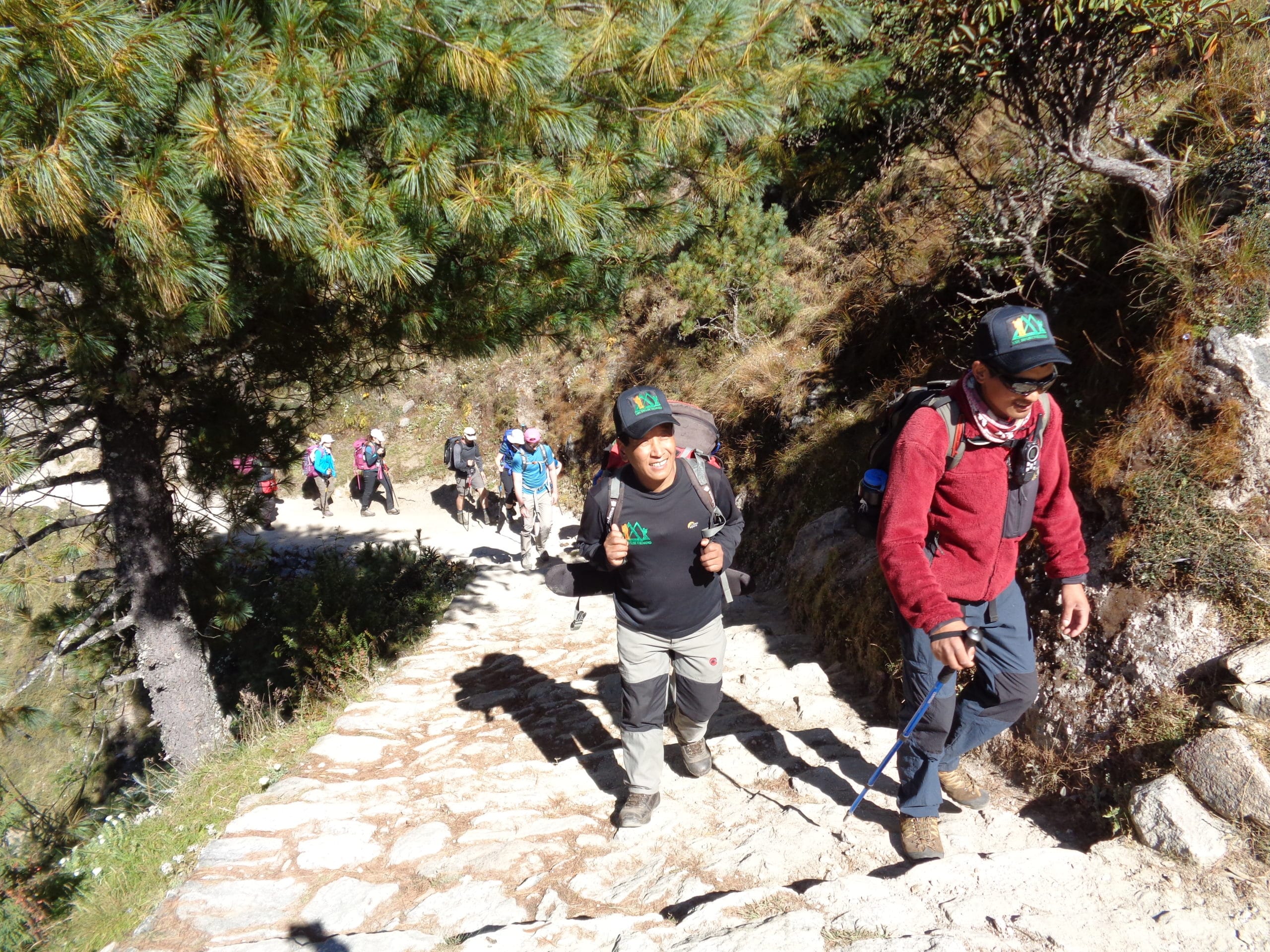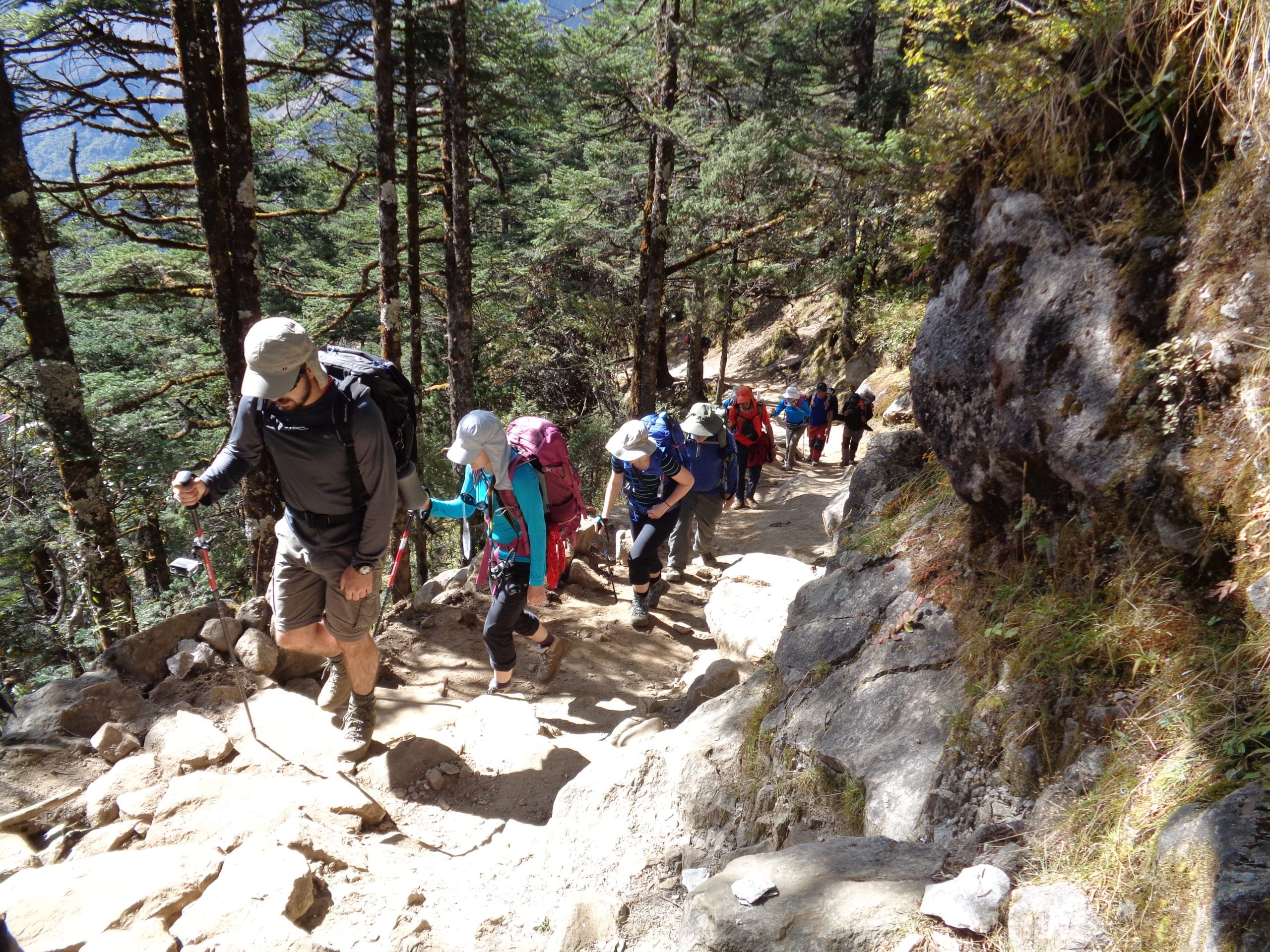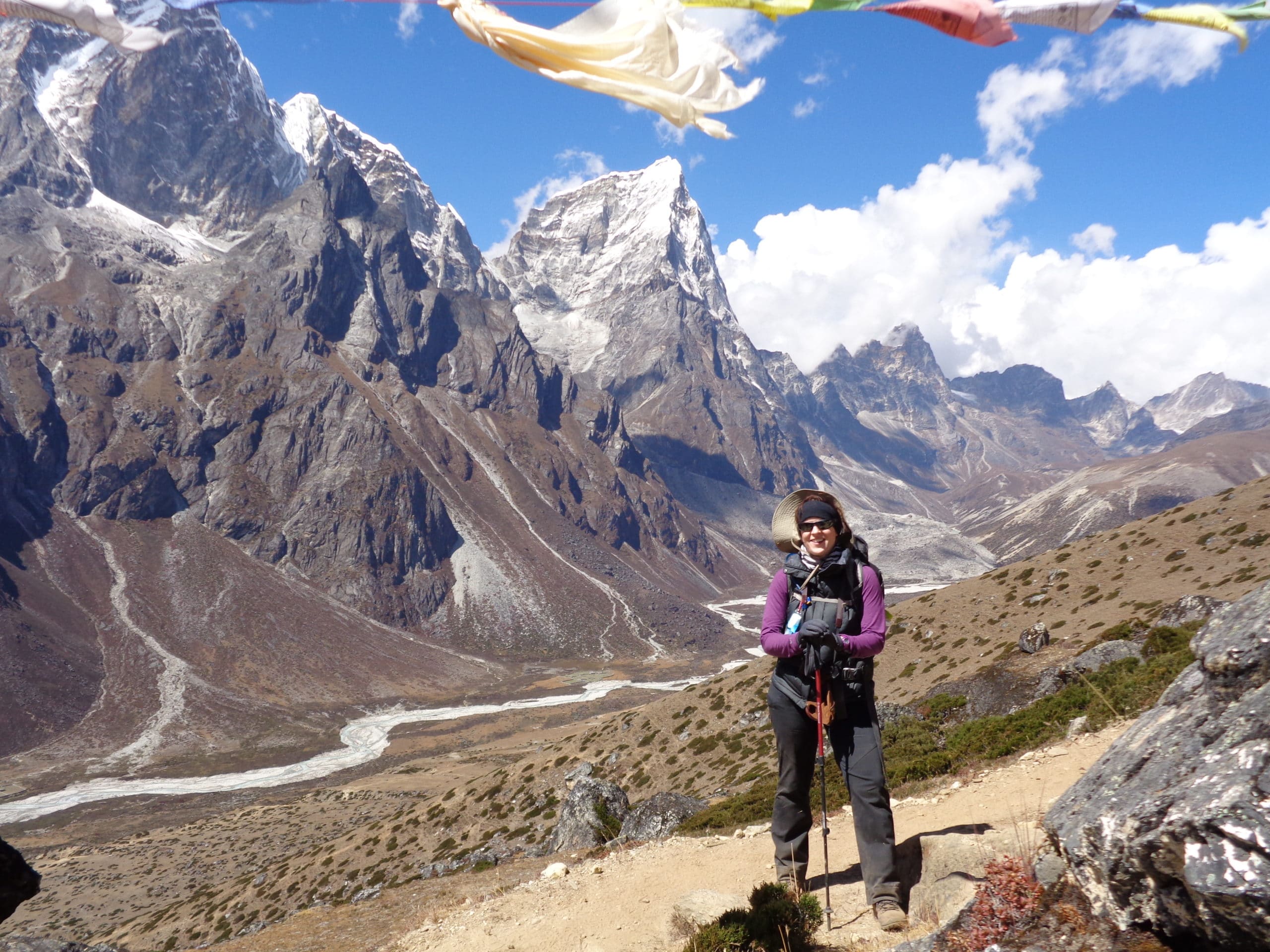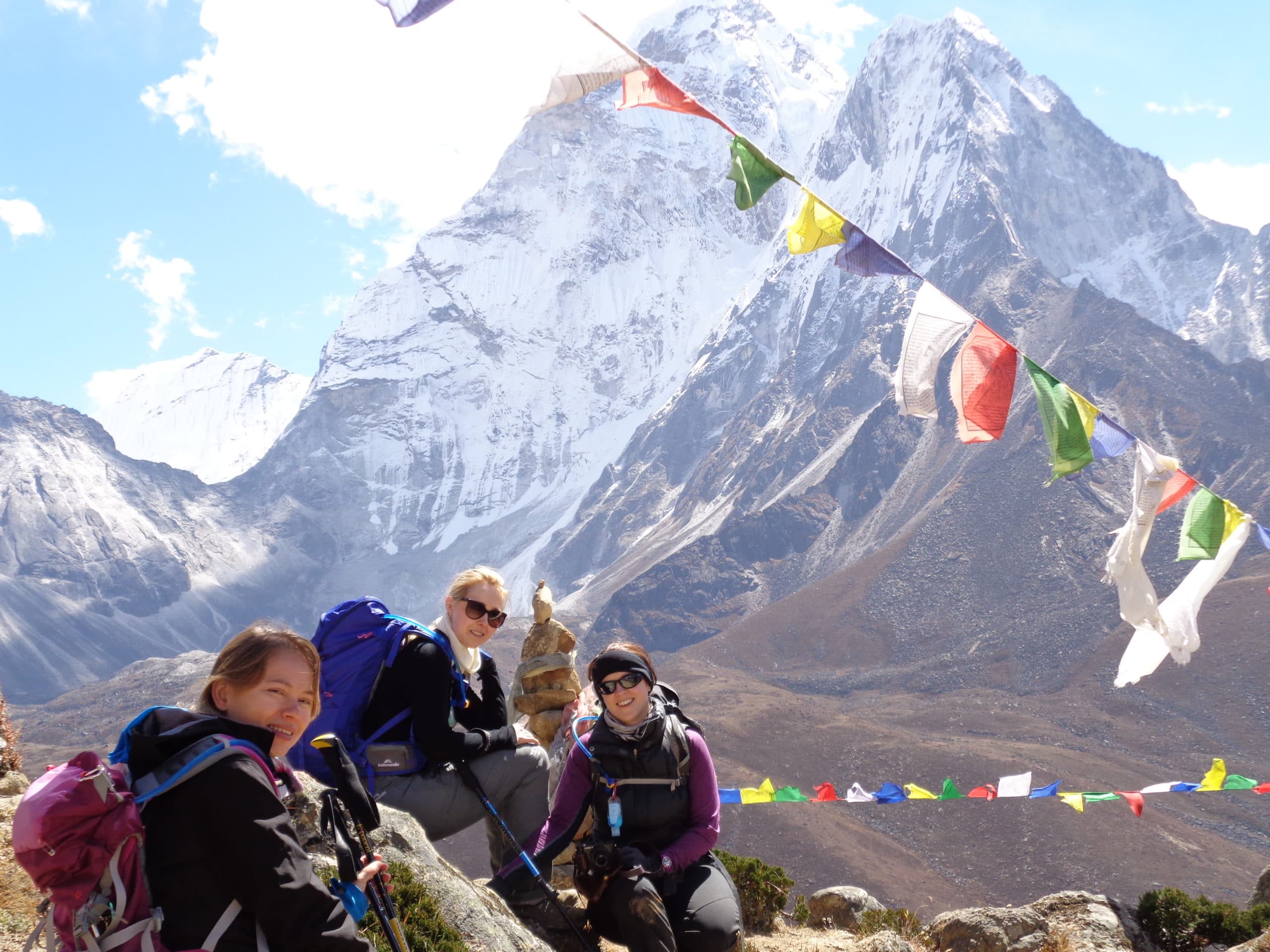These are the 10 most important things to know before trekking to Everest Base Camp. I have climbed Everest to the top and led over 40 treks to Everest Base Camp in the past 15 years. The two main challenges will be adapting well to the lack of oxygen and having the specific physical strength and conditioning for hiking. Let’s explore these and other things to consider below. Watch both of our Everest Base Camp Trekking video’s.
1). Important Inside Advice
Approximately 70% of people make it into Everest Base Camp, even less hike all the way back to Lukla for the return flight. Picking the best itinerary with the best acclimatization, it critical for your safety and success, read more. We have helped over 3,000 people reach Everest base camp and we have 100% success on most of our trips because we have 3 nights in Namche 3,440m/ 11,300 feet on the way up the trail. Check out our sleeping at Everest Base camp Treks here. Pick the itinerary with the best acclimatization and give yourself an experience to remember.
2). Acclimatization is Critical to Success
The biggest mistake people are making in their preparation for Everest Base Camp treks is they fail to have enough acclimatization at the critical parts of the trek. Most people are trying to arrive in Everest Base Camp on day 6 or 7. This is not the way to go.
On our most popular itineraries we arrive into Everest Base Camp on day 9 or day 10. All the research says spend more time at lower altitude, around 3,500m/ 11,500 feet so your body can create more red blood cells. This offers you a safer journey into High and Extreme altitude. I can not emphasize enough, you really need 3 nights in Namche Bazaar at 3,500m/ 11,500 feet. Acclimatize well lower down so your body can adapt easier high up. Sounds simple but most people ignore this advice and suffer the consequences. You came here to enjoy your trip, not endure altitude sickness.
3). Specific Training is Needed to Enjoy This Trek
Depending on your hiking experience, you should be training hard for 3 to 6 months prior to you trek. Build up from 4 to 6 days of training per week. This training will depends on a wide range of factors. You would speak with your doctor first before even considering making this journey. You then need to speak to us or professionals about how you should approach your training. READ MORE.
Take your preparation seriously. You should be comfortable covering 700m/ 2,300 feet of elevation gain multi times per week. It is also important to be doing stability training, core strength work and training for the downhill, read more.
Towards the end of your training and if possible you should be adding in multi-day hikes or longer training sessions. Build your training slowly over a a longer period of time. You need to be training 5 days a week and months prior to your climb. You need to be training with a weighted back pack and training 10+ hours per week, building your strength, endurance, cardio and stressing your body so it will be able to cope better with hiking up and down hills with less oxygen. Learn more. We can help CONTACT US.
4). Bring the Right Clothing
Having the correct clothing and gear can make or break your trip. Please show up with the right clothing and gear for your Everest Base Camp Trek, watch our packing video. Depending on the month you decide to trek to Everest, you will need assistance and expertise in deciding which pieces of gear are the most important. On our trips you will be allowed a max of 15kg/33lbs, which yaks will carry up and down the trail. Ideally it would be best if you have less weight than this.
5). Have Previous Altitude Experience
You do need to understand how your body reacts to low oxygen environments. I would highly recommend a trek to Annapurna base camp, Machu Picchu or Mount Toubkal before you consider trekking to Everest Base Camp. This is not vital, but it will help you understand what itinerary to pick.
6). Think About the Service you Require
Firstly, think about the food you need on the mountain. You need excellent food and fuel to power you up and down the trail to Everest Base Camp. Having a menu with nutritious and balanced meals is critical to your success trekking to Everest. We stay in the best lodges with the best food available in the Everest region. We use Hotel Namche for 4 nights of our trip. You can check it out online. Check out our food and accommodation video.
7). Read our Top 50 Tips
Once you are finished on this page, check out our Top 50 Tips for trekking to Everest Base Camp. Then consider giving us a call. We can provide you with all the tips, information and training advice you need to make a safe and successful trek into the Everest region of Nepal.
8). Hydration, hydration, hydration.
Hydration is critical in low oxygen environments. You need to be drinking 4 liters of water per day on route to Everest Base Camp. Learn more. If you fail to drink enough water you also limit your chances of success. Hydration should start weeks before you go to the Himalaya’s.
Next to oxygen, water is the most important substance that our body needs to survive. Water makes up 60% of our body weight, and blood is normally about 94 percent water when the body is fully hydrated. Now, I am pretty sure that this is no surprise to any of you out there. However, I can’t tell you how many times I have been out backpacking, hiking or mountaineering with folks that just don’t give proper hydration the attention that it deserves.
9). Slow and Steady Wins the Race
Pacing at high altitude is really important. Read more. This is one of the most important another reasons to pick a professional guiding service that understands each persons needs and take extreme care of your safety on the trek to Everest. Pacing is critical and can make all the difference between success and failure. Think about heart rates when you are trekking if you were to push even 10 beats per minutes faster in each hour of exercise on your trek to Everest Base Camp, you would be under so much more pressure, you would waste a lot of energy, fatigue your muscles and have less energy to recovery on your multi-day trekking adventure. We have a set pace that helps all our teams safety reach their destination.
10). Pick the Right Trekking Company
Last but not least, you need to pick the right trekking company that looks after the staff on the ground. In Uganda, we support the Mt. Everest primary school that we built in 2009. We have built 4 schools in Nepal since the earthquake in 2015 and set up the Goli village trust supporting our staffs village. We have brought our Nepalese staff to Kilimanjaro and our Kilimanjaro staff to Nepal and we will keep investing in them to make sure the service we offer is world class.
On our trips, we have 4 guides for every group of 10 trekkers. We can only offer quality service with the same crew working with them and helping them, help their families and communities on the ground where we work.

